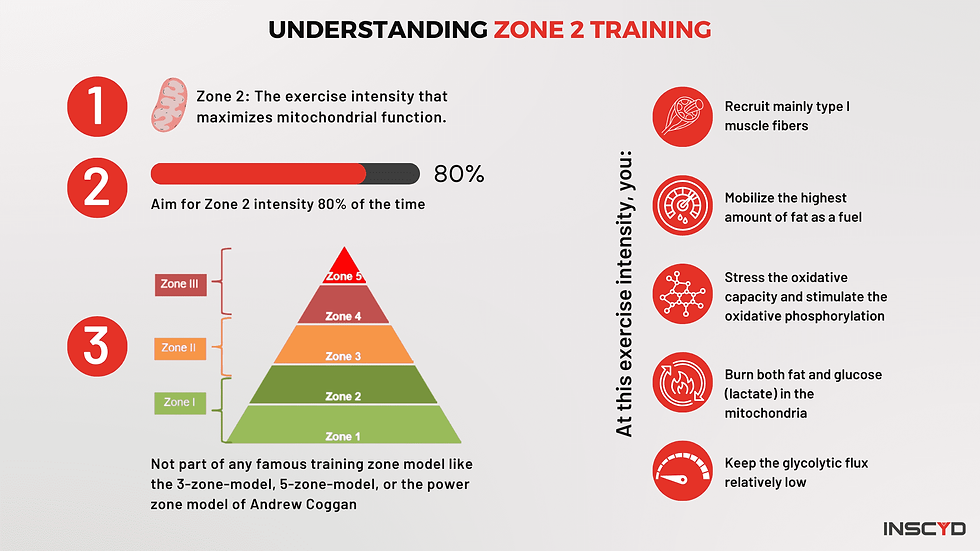Zone 2: The Not-So-Secret Weapon You've Been Overlooking
- Mark Turnbull

- Sep 13, 2025
- 3 min read

We've all heard the buzz. Zone 2 training is the "magic effort level" for exercise. It feels like just yesterday everyone was obsessed with high-intensity interval training (HIIT), and now the spotlight is firmly on these long, slow workouts. But what is Zone 2, really? And why is it so important for us endurance athletes?
Understanding the Basics

Let's clear up the confusion right away. When we talk about Zone 2, we're usually talking about the second of the seven zones in the Coggan model. This is a moderate intensity where you can comfortably hold a conversation, but the person on the other end would definitely know you're working out. It's a key intensity for building or maintaining your cardiovascular endurance.
Physiologically, this is where your body is a master of efficiency. You're primarily stimulating your slow-twitch muscle fibers, and they’re busy oxidizing a mix of glucose and fatty acids. This is also where you hit that sweet spot known as FatMax, the intensity at which you burn the most fat per minute. The beauty of it is that while you're using some glucose, it’s not so much that you're building up lactate. It's all about building a robust aerobic engine.
Debunking the Myths

As with any trend, a few myths have popped up about Zone 2. Let's tackle a couple of the big ones.
"Zone 2 is a magic intensity." This is simply not true. Your body's metabolism works on a continuum. While Zone 2 is fantastic, it's not some mystical place where radical, unique things happen that don't happen in other zones. You won't "break" your metabolism if you stray into Zone 3 for a bit; in fact, working at a slightly higher intensity can provide a stronger stimulus for your aerobic system, though it comes with more fatigue.
"You must do long, low-intensity bases." The old-school thinking was that you needed months of low-intensity work to build a "base" for the season. The truth is that high-intensity training doesn't inhibit those low-intensity adaptations. In fact, intense efforts can greatly improve your sub-maximal endurance by improving your aerobic pathways. So don't be afraid to mix in some hard efforts during your base season. The key is to control the total stress you're putting on your body.
Ultimately, your training plan should be based on your unique context, including your training history, fitness level, and the time you have to train. While pros can ride 20-30 hours a week and spend most of that time in Zone 1, most of us don't have that luxury. The body responds to the dose of stress, not just the specific zone.
The Practical Takeaway
So, how do you put this into practice? You can combine different zones based on your goals. Don't get so hung up on the numbers that you ride alone on a flat road to maintain a steady wattage. The goal is to build fitness in a way that’s sustainable and enjoyable.
Here’s a simple protocol to make sure you’re getting the most out of your Zone 2 rides:
Go with Perceived Effort and Heart Rate: Instead of obsessing over watts, listen to your body. As you get deeper into a ride, your heart rate and perceived effort will climb for the same power output. These metrics are better at capturing the physiological stress your body is feeling.

Over the course of a 20km run the athletes HR rises from 125 to 170bpm fpr the same pace on flat terrain. This visual explains why perceived effort and heart rate are so important. Mix it Up: Don't be a slave to a single power number. It's perfectly fine to adapt to the terrain and your riding partners. You're training for real-world competition, not a lab test.
Find Your Time: If you have a lot of time to train, spend most of it in Zone 2 or even Zone 1. If your time is limited, you can get a great stimulus by including shorter, more intense intervals.
The point is to not let the trees block your view of the forest. The goal is to get faster, and there are many paths to get there.








Comments